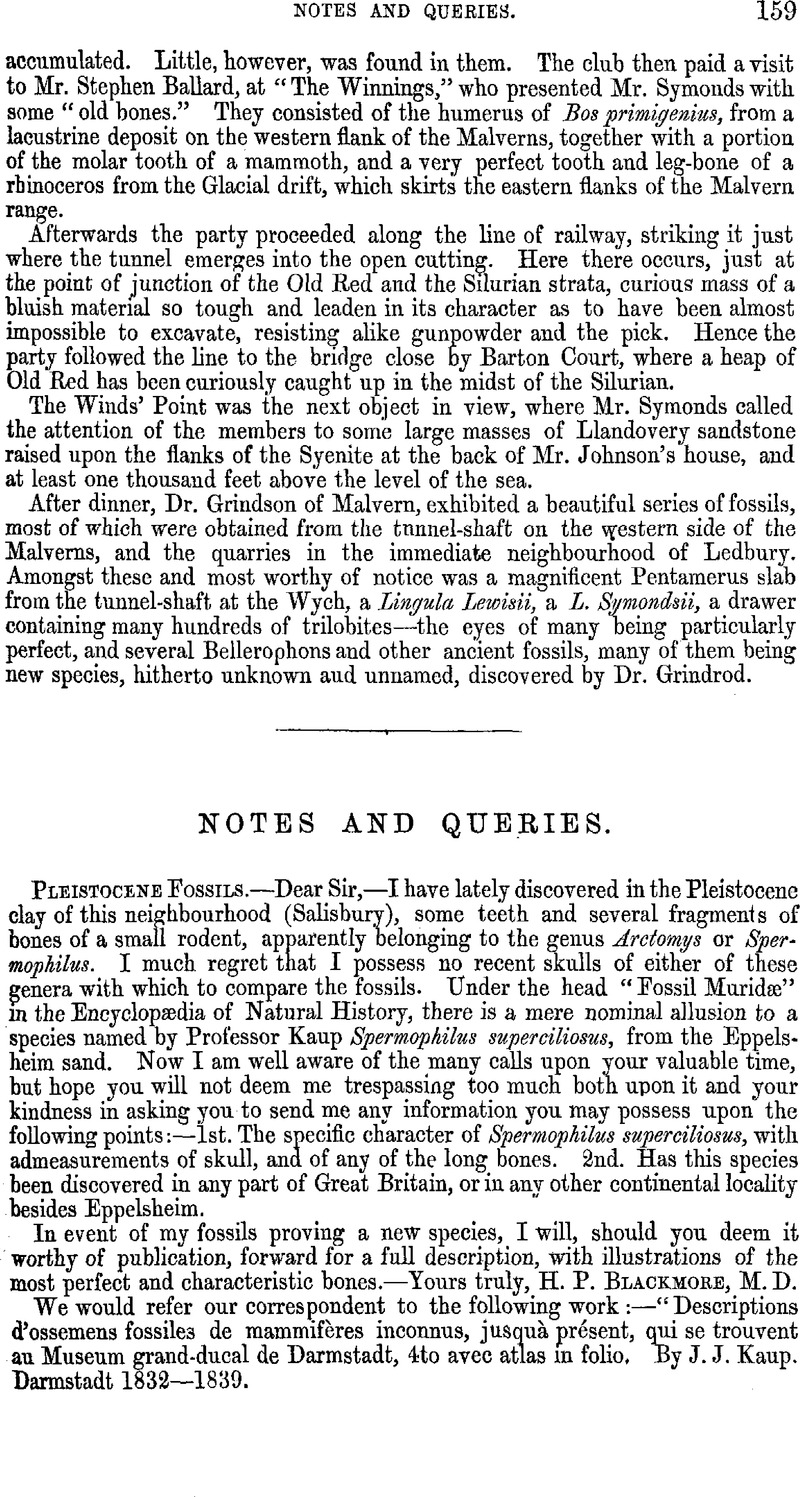No CrossRef data available.
Article contents
Notes and Queries
Published online by Cambridge University Press: 17 March 2016
Abstract

- Type
- Other
- Information
- Copyright
- Copyright © Cambridge University Press 1861
References
page 170 note * Ansted's “Geology,” “Circle of the Sciences,” p.p. 110-111.
page 170 note † Dr. Mantell states that he has found quantities of these perforated ossicula, which had been worn as ornaments, in tumuli of the ancient Britons. “Miller's Popular Geology,” p. 187.
page 172 note * In this quarry this fringing of metallic sulphate is very common. “It affords an interesting proof that animal matter in a state of putrefaction proves a powerful agent in the decomposition of mineral substances held in solution, and on their consequent precipitation. An earthen pitcher, containing several quarts of sulphate of iron, had been suffered to remain undisturbed and unexamined in a corner of Mr. Pepy's laboratory for about a twelvemonth. Some luckless mice had meanwhile fallen into it and been drowned; and when it at lenth came to be examined, an oily scum and a yellow sulphurous powder, mixed with hairs, were seen floating on the top, and the bones of the mice discovered lying at the bottom; and it was found that over the decaying bodies the mineral components of the fluid had been separated and precipitated in a dark-coloured sediment, consisting of grains of pyrites and of sulphur, of copperas in its green and crystalline form, and of black oxide of iron. The animal and mineral matters had mutually acted upon one another; and the metallic sulphate, deprived of its oxygen in the process, had thus cast down its ingredients.”— Miller's, Hugh “Old Red Sandstone,” 7th ed., p. 247 Google Scholar. Was it a solution of sulphate of iron caused the sudden death of the molluscs in the Mountain Limestone seas?
page 173 note † And what I am inclined to regard, after what has been said by Mr. Davidson as several varieties of hastata.




